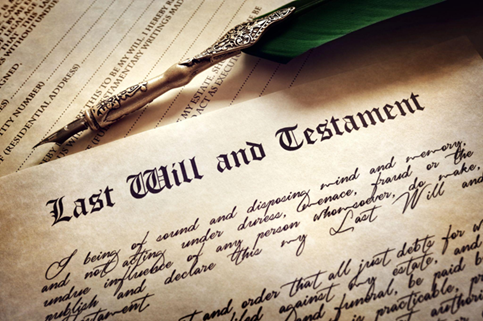A Basic Review of Intellectual Property Use by Businesses
Often when a business evaluates their assets, their primary analysis concentrates on bank accounts, inventory, real property, receivables, and similar assets. These types of assets are often easy calculated and characterized. However, most businesses also possess more intangible assets that may be more difficult to value, but have significant value nonetheless. In fact, these assets may have more value than the easily-calculated bank accounts or real property. One of these areas of assets is intellectual property. In this article, I will provide the top three areas of intellectual property, how they are typically defined, and what protection they may receive.
Patents
Patents are typically divided into two categories. The first category is a utility patent. Utility patents cover methods, processes, devices, machines, manufactured items, or chemical compounds. For a business, these patents protect what has been invented and created by the business for practical application and use. Most “inventions” people typically envision (i.e, the toaster, air conditioning equipment, or pharmaceutical product) are what is protected. These include those inventions that revolutionized society to others that went nowhere.
The second category is referred to as design patents. Design patents protect the ornamental design of a functional item. In this situation, it is the design that is different and not the function and use of the product. A good example of a design patent is the one issued for the Coca-Cola bottle. There are many glass bottles that serve the purpose and are utilized to hold soda. What makes the Coca-Cola bottle different is the special contour shape and curves that make it unique from any other soda bottle and can be protected by its patent.
To obtain patent protection, the inventor must file a patent application with the U.S. Patent and Trademark Office (the “PTO”). If the PTO determines that that invention is patentable, the inventor will be awarded U.S. patent, with a unique patent number, giving the holder unique use and rights to what is protected. Patents can be bought, sold, traded, or inherited. This is accomplished by the original patent holder assigning their rights in writing to another person or entity. This assignment is then recorded with the PTO.
Trademarks
Trademark rights protect words, names, symbols, devices, or any combination thereof. See 15 U.S.C. § 1127. There are three general categories of trademarks:
- Trademarks: These are marks that assist a consumer to be able to differentiate between one protect in the marketplace from another. Famous trademarks that are often observed daily are the BMW propeller emblem, the Nike swoosh, and the multicolor apple for Apple Computers.
- Service Marks: These marks do not advertise a tangible product. Instead, they are utilized to advertise a service or event. For example, the Amazon logo with the swooping arrow and name advertises their internet shipping and retail business.
- Trade Dress: These are distinctive identifying features that form a trademark or service mark. For example, trade dress may be the unique store design of a company. You often see this in food and beverage establishments that always have the same layout, colors, floor design, and employee uniforms. For example, an In-N-Out Burger location, 7-11 store, and McDonalds restaurant building appear almost identical no matter the city, state, or foreign location in which you may be.
Trademarks can also be registered through the PTO. These rights can be assigned to another entity during the lifetime of the holder of the mark. Any assignment or change of ownership needs to be recorded with the PTO.
Copyrights
Copyrights protect original literary works, music (both music and lyrics), dramas, choreography, graphics, photographs, movies and other audiovisual works, sound recordings, paintings, and sculptures. See 17 U.S.C. §§102-103. The Copyright Act identifies the creators of these works under the general term “authors.”
Although authors do not need to register their works with the U.S. Copyright Office, doing so can strengthen their rights. It can also be a factor in a determination of ownership and creation if there is a dispute between two authors of the same material. Like patents and trademarks, copyrights can be sold, transferred, licensed, and provided as part of an author’s estate or business succession plan.
Most intellectual property assets of a business fall into one of these three areas. In subsequent articles, I will discuss the steps that should occur to protect these assets and how they can be valued.
© 2017 Matthew W. Harrison and Harrison Law, PLLC All Rights Reserved
This website and article have been prepared by Harrison Law, PLLC for informational purposes only and does not, and is not intended to, constitute legal or financial advice. The information is not provided in the course of an attorney-client relationship and is not intended to substitute for legal advice from an attorney licensed in your jurisdiction.






